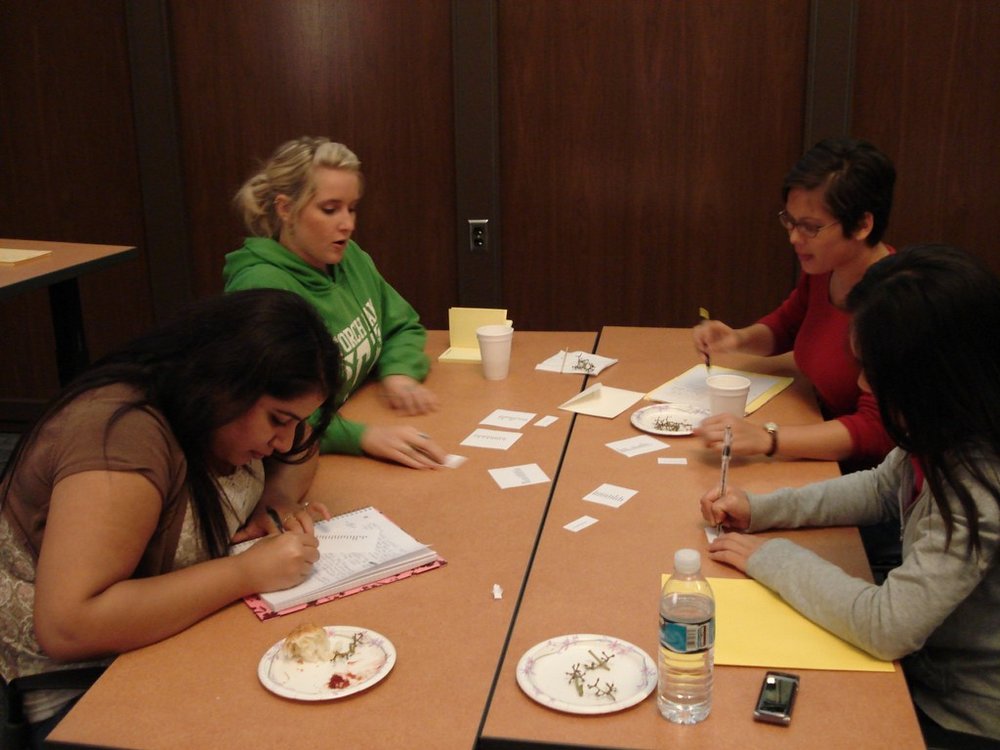
This blog focuses on my scholarship in my five research projects: learning assistance and equity programs, student peer study group programs, learning technologies, Universal Design for Learning, and history simulations. And occasional observations about life.
Kentucky Model for College-Readiness of High School Students
<Click on this link to download the entire 62-page report.>
The purpose of this study was to examine Kentucky high school students’ participation and pass rates in college preparatory transition courses, which are voluntary remedial courses in math and reading offered to grade 12 students in the state. Three groups of students were compared using the population of grade 12 students in Kentucky public schools in school year 2011/12 (n=33,928): students meeting state benchmarks, students approaching state benchmarks (1 to 3 points below), and students performing below state benchmarks (4 or more points below). The courses targeted students who were approaching state benchmarks, but all students were eligible to take them. Results were examined for member school districts of the Southeast/South-Central Educational Cooperative (a research partner with Regional Educational Laboratory Appalachia), a matched comparison group of districts with similar characteristics identified through propensity score matching, and the state as a whole. The study found that most students, even those targeted for the intervention, did not participate in the college preparatory transition courses. Among students who were approaching state benchmarks in math, fewer than one-third (28.1 percent) took transition courses, and among students approaching state benchmarks in reading, fewer than one-tenth (8.0 percent) enrolled in transition courses. Despite the intention of the policy, students from all three groups (meeting, approaching, and below state benchmarks) enrolled in the courses. Statewide pass rates for students who did enroll in transition courses in math or reading were more than 90 percent. Examining participation and pass rates can help schools and districts understand how college preparatory transition courses are used and may be adapted to meet the needs of students targeted for intervention.
Failure by Colleges and Government to Bridge Inequality
 <Click here to download entire commentary from NY Times.>
<Click here to download entire commentary from NY Times.>
Sobering commentary in NY Times on the initial promise of college as levelor of inequality through GI Bill and early years of federal financial aid programs and subsequent failure to keep up the financial commitment to the majority in society without the social capital of the priveledged classes. Following is a short excerpt from the commentary. Be sure to read some of the comments to the article (as of the moment, they number more than 250).
"When the G.I. Bill of Rights of 1944 made colleges accessible to veterans regardless of socioeconomic background, Robert Maynard Hutchins, the president of the University of Chicago, worried that it would transform elite institutions into “educational hobo jungles.” But the G.I. Bill was only the first of several federal student aid laws that, along with increasing state investment in public universities and colleges, transformed American higher education over the course of three decades from a bastion of privilege into a path toward the American dream.
Something else began to happen around 1980. College graduation rates kept soaring for the affluent, but for those in the bottom half, a four-year degree is scarcely more attainable today than it was in the 1970s. And because some colleges actually hinder social mobility, what increasingly matters is not just whether you go to college but where. The demise of opportunity through higher education is, fundamentally, a political failure. Our landmark higher education policies have ceased to function effectively, and lawmakers — consumed by partisan polarization and plutocracy — have neglected to maintain and update them. . . ." <Click here to continue reading.>
New Publication: Understanding the Peer Assisted Learning Model
 Since 2006, the PAL program at the University of Minnesopta has contributed to improved academic performance of participating PAL students in rigorous introductory-level college courses.The program is built upon best practices from previous international peer learning models like Supplemental Instruction, Peer-led Team Learning, Emerging Scholars Program, and others. PAL is also guided by learning theories such as Universal Design for Learning to make the model more culturally-sensitive and embedded within the courses to increase its effectiveness for all students. Both quantitative and qualitative studies of PAL validate its effectiveness for increasing academic success of participating students and fostering development of personal and social skills. In addition to benefits for the participants, the PAL experience benefits PAL facilitators through deeper mastery of rigorous course material, increased confidence in public speaking and small group management skills, and encouragement to pursue a teaching career. While the PAL program was started to address the achievement gap in courses, it has bloomed into one that also enhances personal and professional skills for all that are involved.Built upon principles identified by other academic support programs and innovations of its own creation, PAL is an integral part of UMN’s overall academic support efforts.
Since 2006, the PAL program at the University of Minnesopta has contributed to improved academic performance of participating PAL students in rigorous introductory-level college courses.The program is built upon best practices from previous international peer learning models like Supplemental Instruction, Peer-led Team Learning, Emerging Scholars Program, and others. PAL is also guided by learning theories such as Universal Design for Learning to make the model more culturally-sensitive and embedded within the courses to increase its effectiveness for all students. Both quantitative and qualitative studies of PAL validate its effectiveness for increasing academic success of participating students and fostering development of personal and social skills. In addition to benefits for the participants, the PAL experience benefits PAL facilitators through deeper mastery of rigorous course material, increased confidence in public speaking and small group management skills, and encouragement to pursue a teaching career. While the PAL program was started to address the achievement gap in courses, it has bloomed into one that also enhances personal and professional skills for all that are involved.Built upon principles identified by other academic support programs and innovations of its own creation, PAL is an integral part of UMN’s overall academic support efforts.
Arendale, D. R. (2014). Understanding the Peer Assistance Learning model: Student study groups in challenging college courses. International Journal of Higher Education, 3(2), 1-12. doi:10.5430/ijhe.v3n2p Retrieved from http://www.sciedu.ca/journal/index.php/ijhe/article/view/4151/2498
Postsecondary Peer Cooperative Learning 2014 Annotated Bibliography
Postsecondcary Peer Cooperative Learning 2014 Annotated Bibliography. Compiled by David Arendale.
<Click on this web link to download the document.>
I just updated my annotated bibliography on peer learning programs. The bibliography is 160,000 words and 340 pages in length. It features every article or report published on six of the major peer learning programs in higher education: Accelerated Learning Groups (developed by Sydney Stansbury at University of Southern California), Emerging Scholars Program (developed by Uri Treisman at UC-Berkeley), Peer-led Team Learning (developed at City Univeristy of New York), Structured Learning Assistance (developed at Ferris State University), Supplemental Instruction (developed at the University of Missouri-Kansas City), and Video-based Supplemental Instruction (developed at UMKC as well).
Peer collaborative learning has been popular in education for decades. As both pedagogy and learning strategy, it has been frequently adopted and adapted for a wide range of academic content areas throughout education at the elementary, secondary, and postsecondary levels due to its benefits. The professional literature is filled with reports of individual professors integrating this approach into postsecondary classrooms in diverse ways. Increased attention has been placed on this practice due to claims by some programs that carefully coordinated and managed learning programs with specific protocols can increase student persistence rates towards graduation, supporting both student goal aspirations as well as bolstering institutional revenues..

The six student peer learning programs included in this bibliography meet the following characteristics: (a) the program must have been implemented at the postsecondary or tertiary level; (b) the program has a clear set of systematic procedures for its implementation that could be replicated by another institution; (c) program evaluation studies have been conducted and are available for review; (d) the program intentionally embeds learning strategy practice along with review of the academic content material; (e) the program outcomes include increased content knowledge, higher final course grades, higher pass rates, and higher college persistence rates; and (f) the program has been replicated at another institution with similar positive student outcomes. From a review of the professional literature six programs emerged: Accelerated Learning Groups (ALGs), Emerging Scholars Program (ESP), Peer-Led Team Learning (PLTL), Structured Learning Assistance (SLA), Supplemental Instruction (SI), and Video-based Supplemental Instruction (VSI). Some of the programs share common history and seek to improve upon previous practices. Other programs were developed independently.
An Hour Makes a Difference By Scott Jaschik
 For years, studies have found that first-generation college students -- those who do not have a parent with a college degree -- lag other students on a range of education achievement factors. Their grades are lower and their dropout rates are higher. But since such students are most likely to advance economically if they succeed in higher education, colleges and universities have pushed for decades to recruit more of them. This has created "a paradox" in that recruiting first-generation students, but then watching many of them fail, means that higher education has "continued to reproduce and widen, rather than close" an achievement gap based on social class, according to the depressing beginning of a paper forthcoming in the journal Psychological Science. But the article is actually quite optimistic, as it outlines a potential solution to this problem, suggesting that this approach (which involves a one-hour, next-to-no-cost program) can close 63 percent of the achievement gap (measured by such factors as grades) between first-generation and other students.
For years, studies have found that first-generation college students -- those who do not have a parent with a college degree -- lag other students on a range of education achievement factors. Their grades are lower and their dropout rates are higher. But since such students are most likely to advance economically if they succeed in higher education, colleges and universities have pushed for decades to recruit more of them. This has created "a paradox" in that recruiting first-generation students, but then watching many of them fail, means that higher education has "continued to reproduce and widen, rather than close" an achievement gap based on social class, according to the depressing beginning of a paper forthcoming in the journal Psychological Science. But the article is actually quite optimistic, as it outlines a potential solution to this problem, suggesting that this approach (which involves a one-hour, next-to-no-cost program) can close 63 percent of the achievement gap (measured by such factors as grades) between first-generation and other students.
What is the solution? A one-hour program for new students that is called a "difference-education intervention."
In the program, college juniors and seniors from a range of backgrounds talk about how they adjusted to college, and how they sought out resources and people to help them with decisions, issues they didn't understand and so forth.

Among the areas where they found a notable impact from participants in the program: higher grade-point averages and significant increase in the odds of using various campus resources that help students with a range of issues. The authors of the paper are Nicole M. Stephens, associate professor of management and organizations at the Kellogg School of Management at Northwestern University; MarYam G. Hamedani, associate director of the Center for Comparative Studies in Race and Ethnicity at Stanford University; and Mesmin Destin, assistant professor of psychology at Northwestern University. Their findings are based on a study involving 147 students (who completed the project) at an unnamed private university. First generation was defined as not having a parent with a four-year college degree. Most of the first-generation students (59.1 percent) were recipients of Pell Grants, while this was true only for 8.6 percent of the students with at least one parent with a four-year degree. Their thesis -- that a relatively modest intervention could have a big impact -- was based on the view that first-generation students may be most lacking not in potential but in savvy about how to deal with the issues that face most college students. They cite past research by several authors to show that this is the gap that must be narrowed to close the achievement gap.
Many first-generation students "struggle to navigate the middle-class culture of higher education, learn the 'rules of the game,' and take advantage of college resources," they write. And this becomes more of a problem when colleges don't talk about the class advantages and disadvantages of different groups of students. "Because U.S. colleges and universities seldom acknowledge how social class can affect students' educational experiences, many first-generation students lack insight about why they are struggling and do not understand how students 'like them' can improve."
NMC Horizon Report: 2014 Higher Education
Following are just a few of the upcoming trends in technology use. Some seem obvious, others not. <To read the complete report, click on this web link.>
White House Report on Efforts to Support Low Income College Students
<Click this web link to download the entire report.>
Executive Summary. With the growing demand for college educated workers, a college education is one of the surest ways into the middle class. To help more students afford and graduate from college, the Administration has taken steps to address these challenges doubling Federal investments in Pell Grants and college tax credits, reforming student loans, and taking new steps to reduce college costs and improve value. But while the President continues to push for changes that keep college affordable for all students and families, we can and must be doing more to get more low income students prepared for college, enrolle d in quality institutions, and graduating. success. Low income students face barriers to college access and Each year hundreds of thousands of low college, apply to the best fit schools, apply for financi al aid, enroll and persist in their studies, and ultimately graduate. As a result, large gaps remain in educational achievement between students from low- income families and their high income peers. Increasing college opportunity is not just an economic imperative, but a reflection of our values. We need to reach, inspire, and empower every student, regardless of background, to make sure that our country is a place where if you work hard, you have a chance to get ahead. Under the President and First Lady’s leadership, the Administration and the Department of Education engaged with leading experts to identify the barriers to increasing college opportunity
Some of the most promising actions are to help and encourage low income students to apply, enroll, and succeed in college. Based on the existing evidence, we identified four key areas where we could be doing more to promote college opportunity. On January 16 the Administration is announcing new commitments from colleges and university presidents, nonprofits, leaders of philanthropy and the private sector in these four key areas. These efforts mark the beginning of an ongoing mobilization that will work to promote evidence based techniques, continue to understand what works, and expand successful efforts.
